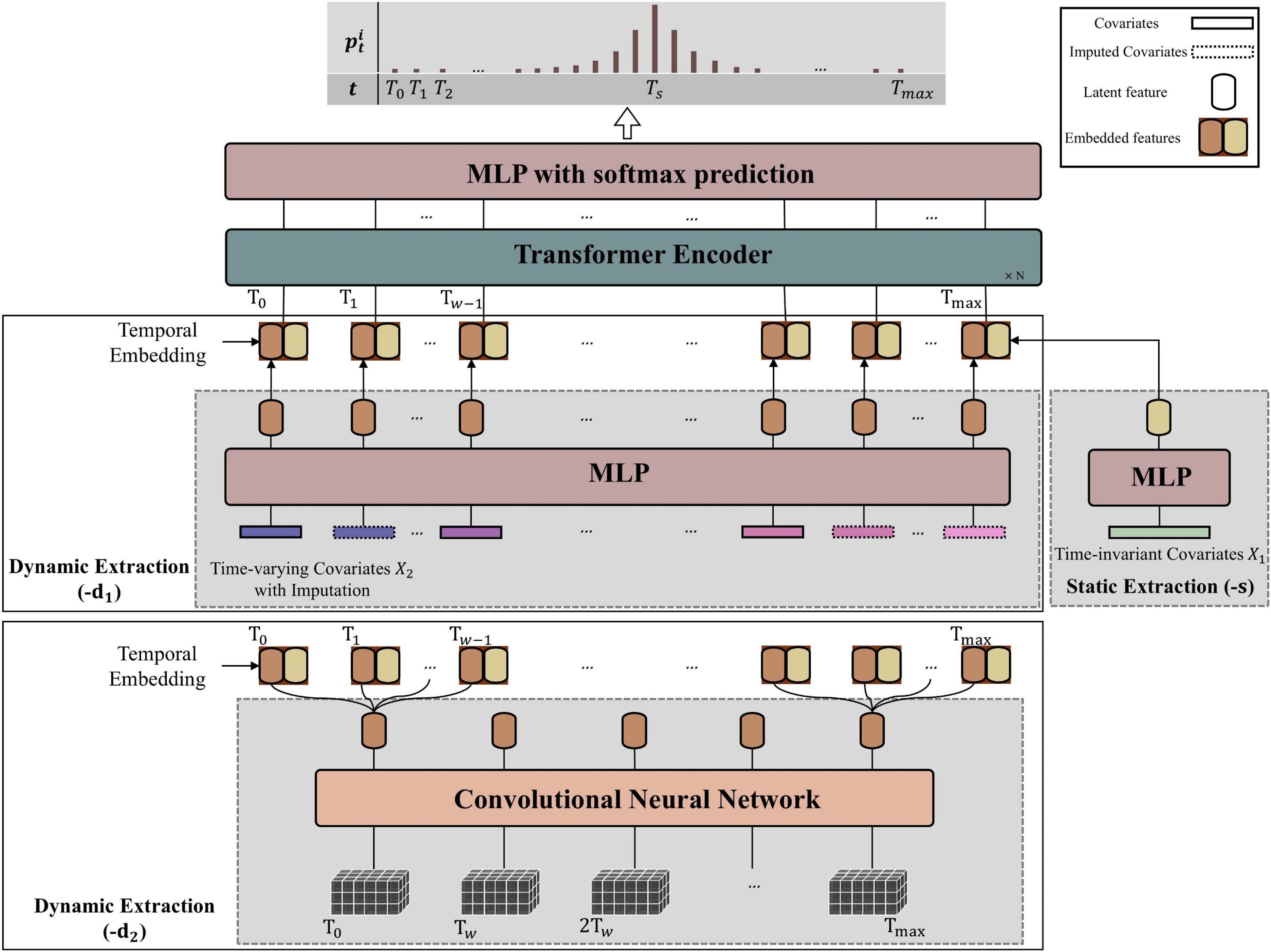ICTSurF: Implicit Continuous-Time Survival Functions with Neural Networks

0

Sign in to get full access
This summary was produced with help from an AI and may contain inaccuracies - check out the links to read the original source documents!
Related Papers


0
ICTSurF: Implicit Continuous-Time Survival Functions with Neural Networks
Chanon Puttanawarut, Panu Looareesuwan, Romen Samuel Wabina, Prut Saowaprut
Survival analysis is a widely known method for predicting the likelihood of an event over time. The challenge of dealing with censored samples still remains. Traditional methods, such as the Cox Proportional Hazards (CPH) model, hinge on the limitations due to the strong assumptions of proportional hazards and the predetermined relationships between covariates. The rise of models based on deep neural networks (DNNs) has demonstrated enhanced effectiveness in survival analysis. This research introduces the Implicit Continuous-Time Survival Function (ICTSurF), built on a continuous-time survival model, and constructs survival distribution through implicit representation. As a result, our method is capable of accepting inputs in continuous-time space and producing survival probabilities in continuous-time space, independent of neural network architecture. Comparative assessments with existing methods underscore the high competitiveness of our proposed approach. Our implementation of ICTSurF is available at https://github.com/44REAM/ICTSurF.
Read more6/27/2024


0
Bayesian Survival Analysis by Approximate Inference of Neural Networks
Christian Marius Lillelund, Martin Magris, Christian Fischer Pedersen
Variational Inference (VI) is a commonly used technique for approximate Bayesian inference and uncertainty estimation in deep learning models, yet it comes at a computational cost, as it doubles the number of trainable parameters to represent uncertainty. This rapidly becomes challenging in high-dimensional settings and motivates the use of alternative techniques for inference, such as Monte Carlo Dropout (MCD) or Spectral-normalized Neural Gaussian Process (SNGP). However, such methods have seen little adoption in survival analysis, and VI remains the prevalent approach for training probabilistic neural networks. In this paper, we investigate how to train deep probabilistic survival models in large datasets without introducing additional overhead in model complexity. To achieve this, we adopt three probabilistic approaches, namely VI, MCD, and SNGP, and evaluate them in terms of their prediction performance, calibration performance, and model complexity. In the context of probabilistic survival analysis, we investigate whether non-VI techniques can offer comparable or possibly improved prediction performance and uncertainty calibration compared to VI. In the MIMIC-IV dataset, we find that MCD aligns with VI in terms of the concordance index (0.748 vs. 0.743) and mean absolute error (254.9 vs. 254.7) using hinge loss, while providing C-calibrated uncertainty estimates. Moreover, our SNGP implementation provides D-calibrated survival functions in all datasets compared to VI (4/4 vs. 2/4, respectively). Our work encourages the use of techniques alternative to VI for survival analysis in high-dimensional datasets, where computational efficiency and overhead are of concern.
Read more6/21/2024


0
Adaptive Transformer Modelling of Density Function for Nonparametric Survival Analysis
Xin Zhang, Deval Mehta, Yanan Hu, Chao Zhu, David Darby, Zhen Yu, Daniel Merlo, Melissa Gresle, Anneke Van Der Walt, Helmut Butzkueven, Zongyuan Ge
Survival analysis holds a crucial role across diverse disciplines, such as economics, engineering and healthcare. It empowers researchers to analyze both time-invariant and time-varying data, encompassing phenomena like customer churn, material degradation and various medical outcomes. Given the complexity and heterogeneity of such data, recent endeavors have demonstrated successful integration of deep learning methodologies to address limitations in conventional statistical approaches. However, current methods typically involve cluttered probability distribution function (PDF), have lower sensitivity in censoring prediction, only model static datasets, or only rely on recurrent neural networks for dynamic modelling. In this paper, we propose a novel survival regression method capable of producing high-quality unimodal PDFs without any prior distribution assumption, by optimizing novel Margin-Mean-Variance loss and leveraging the flexibility of Transformer to handle both temporal and non-temporal data, coined UniSurv. Extensive experiments on several datasets demonstrate that UniSurv places a significantly higher emphasis on censoring compared to other methods.
Read more9/11/2024


0
FPBoost: Fully Parametric Gradient Boosting for Survival Analysis
Alberto Archetti, Eugenio Lomurno, Diego Piccinotti, Matteo Matteucci
Survival analysis is a critical tool for analyzing time-to-event data and extracting valuable clinical insights. Recently, numerous machine learning techniques leveraging neural networks and decision trees have been developed for this task. Among these, the most successful approaches often rely on specific assumptions about the shape of the modeled hazard function. These assumptions include proportional hazard, accelerated failure time, or discrete estimation at a predefined set of time points. In this study, we propose a novel paradigm for survival model design based on the weighted sum of individual fully parametric hazard contributions. We build upon well-known ensemble techniques to deliver a novel contribution to the field by applying additive hazard functions, improving over approaches based on survival or cumulative hazard functions. Furthermore, the proposed model, which we call FPBoost, is the first algorithm to directly optimize the survival likelihood via gradient boosting. We evaluated our approach across a diverse set of datasets, comparing it against a variety of state-of-the-art models. The results demonstrate that FPBoost improves risk estimation, according to both concordance and calibration metrics.
Read more9/23/2024